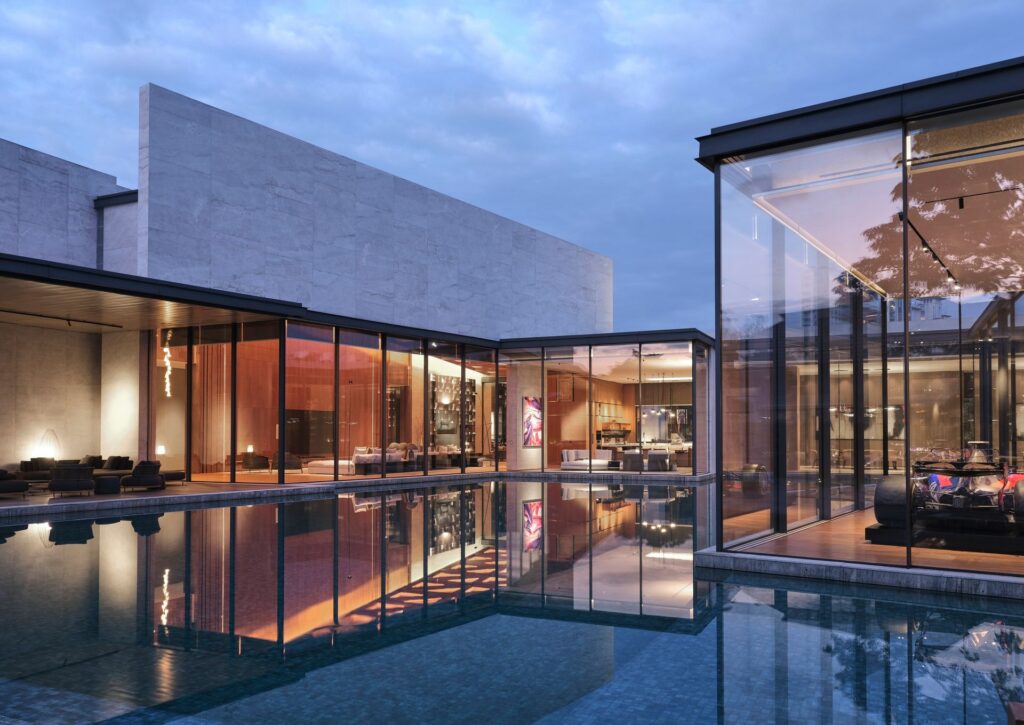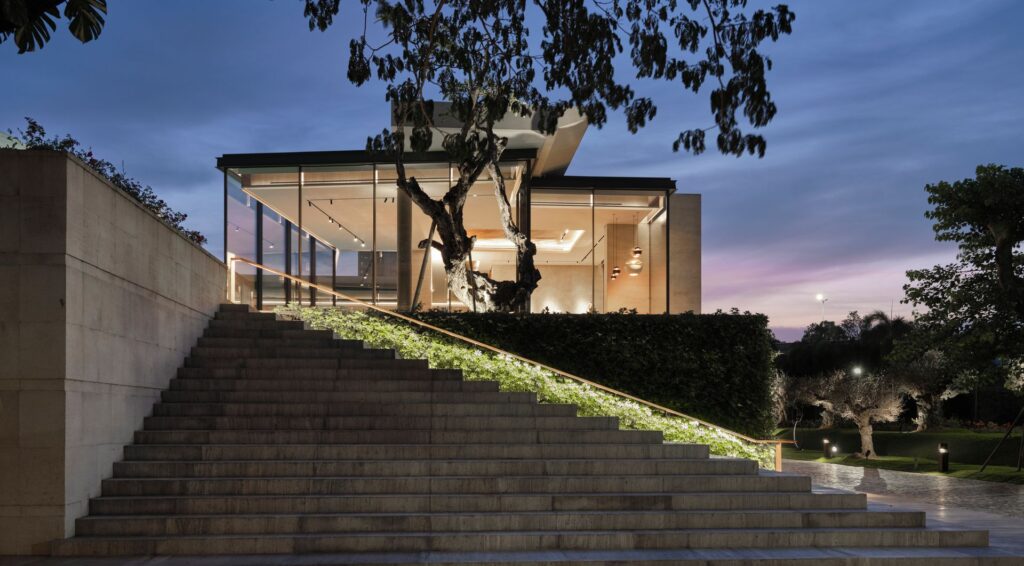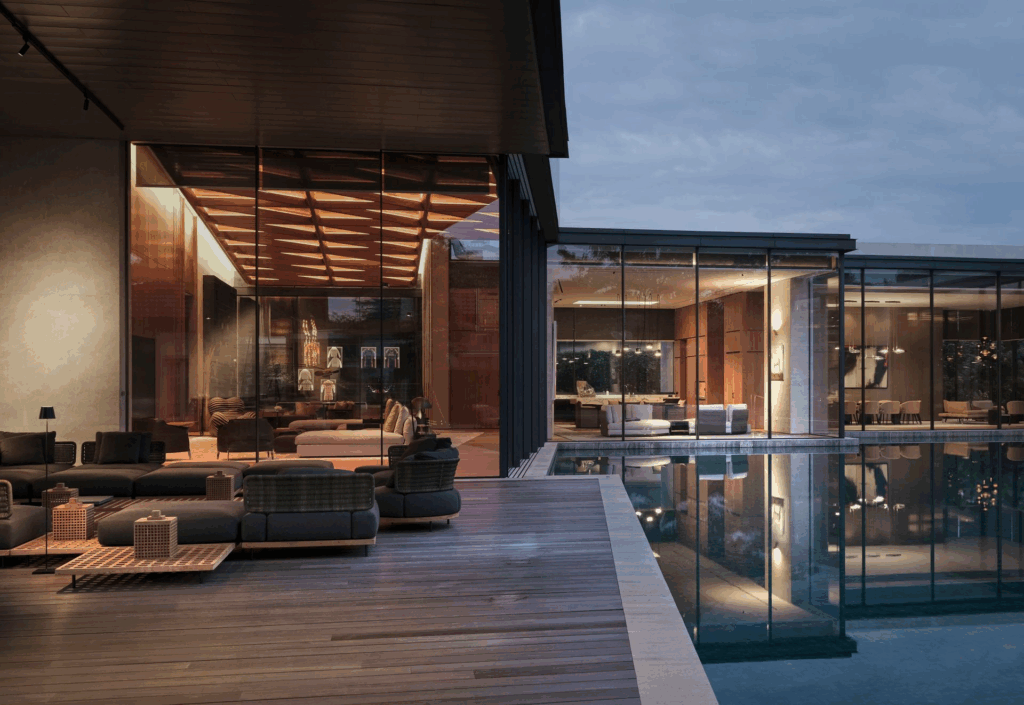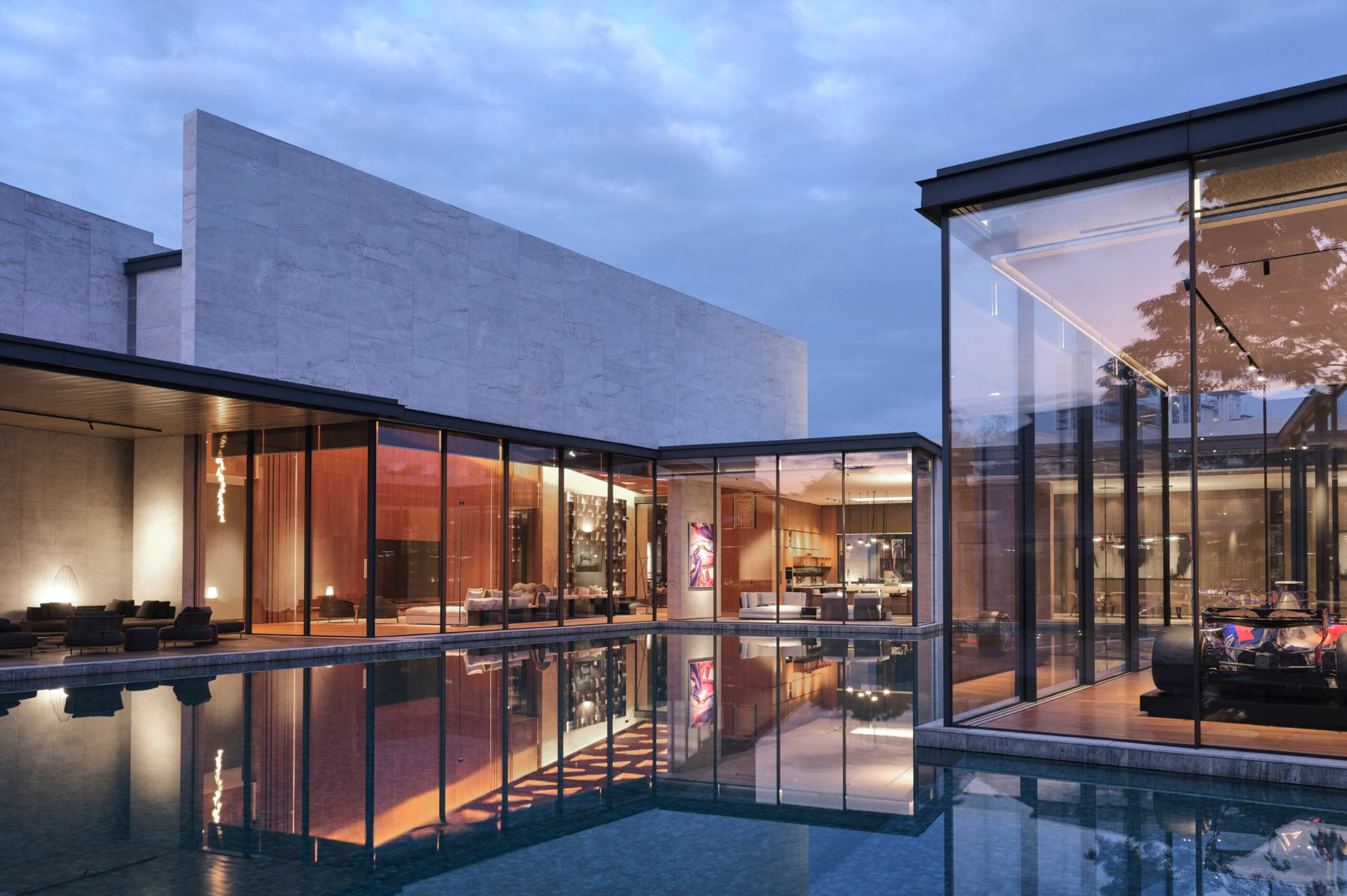PAI Design’s architects are renowned for their diverse portfolio, which includes notable projects such as the Prapanca Project in Indonesia and guesthouses in Fuzhou. We asked them how they approach each project’s unique challenges and cultural influences. Their answer was clear and inspiring:
“We are a group of people from many backgrounds, including Western, Chinese, Javanese, and Balinese. Our practice represents how the world appreciates the beauty of many cultures. We recognize and value the contributions of our diverse group.”
This diversity is a driving force that allows PAI Design to approach each project with a rich, varied perspective, resulting in architectural solutions that meet and celebrate each location’s cultural specifics.

The relationship between architecture and interior design is often described as art. At PAI, this intersection is fundamental to creating spaces that function effectively and evoke a sense of beauty and artistry. The architects explain: “Our philosophy is that architecture is not separated from the spaces it creates; the space or interior experiences significantly impact the architecture.”
This holistic approach ensures that each PAI Design project meets the functional needs of its occupants and creates aesthetically pleasing and inspiring environments.
The Prapanca Project is a luxurious villa that exemplifies PAI’s commitment to exceptional design and architecture. Describing the key challenges of this project, the team shared: “The Prapanca project was one of the few experiences where the architect could rely on the owner for true collaboration. Ideas flowed freely and were thoroughly evaluated, resulting in a stunning architectural design and an unparalleled living experience. The only hurdle was the exciting task of selecting the most outstanding ideas to bring to life.
This close collaboration between architect and client resulted in a project that reflects PAI’s creative vision and the owner’s aspirations and lifestyle.

PAI Design’s projects span different countries and regions. Adapting design concepts to resonate with local culture while maintaining a consistent design identity is a constant challenge. The team addresses this challenge with a clear philosophy: “Cultural aspects differ from region to region; our approach to a consistent ethos is to create structures with similar spacing, light access, volume modulation, and a rhythm of movement from space to space.”
This approach ensures that PAI’s projects maintain a cohesive identity regardless of location while celebrating local cultural specifics.
Exploring the theme of utopia, PAI shared their perspective on the role of architecture and interior design in shaping utopian visions for the future:
“Utopia is multifaceted because a lot of our work is private residences; we focus on creating sanctuaries for the residents. Retreats, if you will, are designed specifically for the residents and their way of life. This private utopia finds its way into the owners’ mindset and can manifest itself in how they do business or how they view their way of life.”
For PAI, creating a better world through design and functionality is an ongoing mission. Their works not only provide personal retreats but also positively influence the lives and attitudes of their occupants.

PAI Design exemplifies how integrating diverse cultural influences and true collaboration can result in unique and inspiring architectural designs. Through their holistic philosophy and innovative approach, PAI continues to shape the future of architecture, creating spaces that are functional, artistic, and deeply connected to local cultures.
